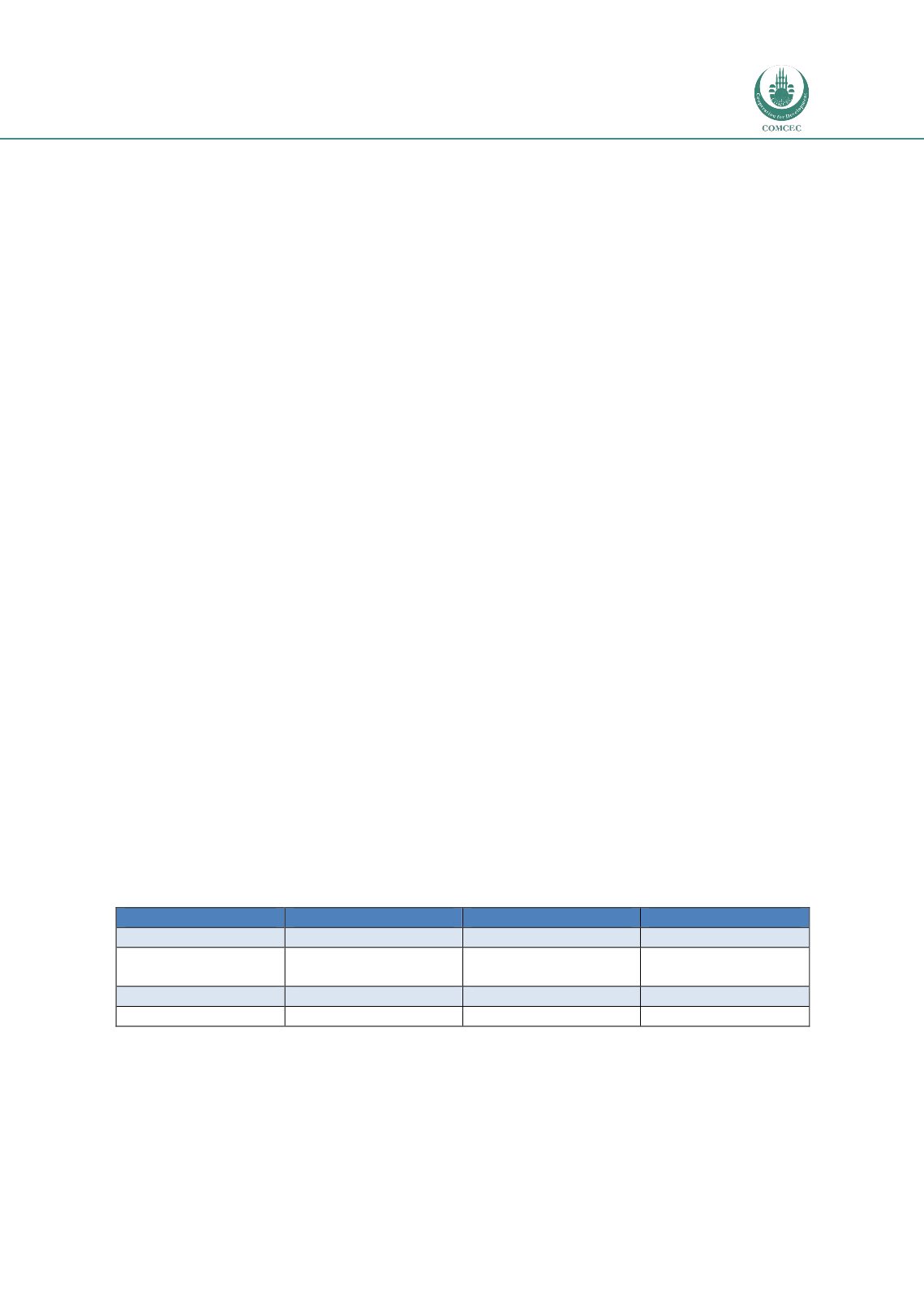

Promoting Agricultural Value Chains
In the OIC Member Countries
87
The ESK and the MFAL do not wield control over the whole value chain, but there are moves
towards increased central influence over red meat production (as illustrated by the growth of
the companies mentioned above). This is particularly evident in efforts to consolidate (and
prevent fracturing of) patches of land into larger pastures, for more effective cattle grazing.
Without these centralised efforts to move beyond the current small-scale nature of red meat
production, effective governance of the value chain remains elusive.
A consequence of the continuing small-scale nature of red meat production is relatively low
carcass productivity. Productivity per cattle is roughly 187 kg (FAOSTAT, 2012). This is due to
a combination of several unfavourable factors:
Small size of the farms;
Low production and high cost of feed: fodder planting is limited and pastures are not
properly managed. Most animals are fed with a high content of straw in the diet, which
restricts growth rates;
Indigenous or Holstein and Brown Swiss breeds reared are not suitable for high quality
beef production.
The introduction of new, more appropriate breeds of cattle, coupled with more effective land
use and farming inputs aims to increase this average carcass productivity, and modernise the
sector.
5.3.5
Trade
The contemporary nature of red meat imports and exports in Turkey are fluid. While the EU
remains one of Turkey’s biggest agricultural partners, there is increasing demand for Turkish
red meat imports from countries in the Middle East (Şanliurfa, 2014). Protection of prices is
ensured through import tariffs on livestock products and the restrictions on the import of beef
and live bovine animals from the EU (and other countries), which keep the price of red meat
higher than it would otherwise be.
In 2009, the Government intervened in meat prices by issuing import licenses for foreign red
meat and livestock. The cheaper livestock from abroad pushed down domestic red meat prices
(Erdem, 2012). Turkish imports of red meat were worth US$ 3.22 billion between June 2010
and January 2013 (Zaman, 2013) (see als
o Table 5-3).
Table 5-3 Turkish red meat imports in 2012
Item
Year
Unit
Value
Meat, Cattle
2012
1000$
95,979
Meat, beef,
preparations
2012
1000$
1013
Meat: Bovine (Fresh)
2012
1000$
95,992
Bovine Meat
2012
1000$
97,062
Source: FAOSTAT, 2012

















